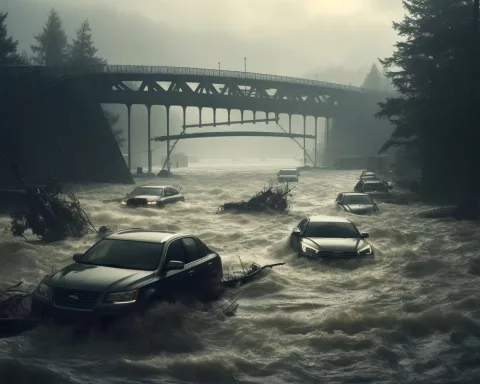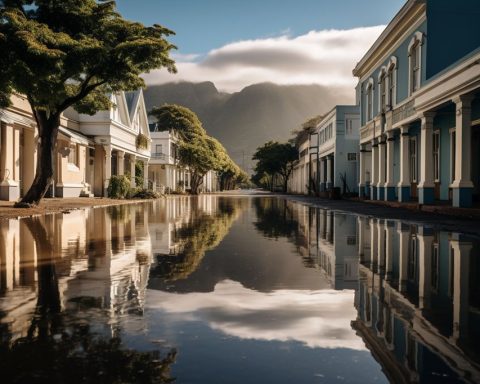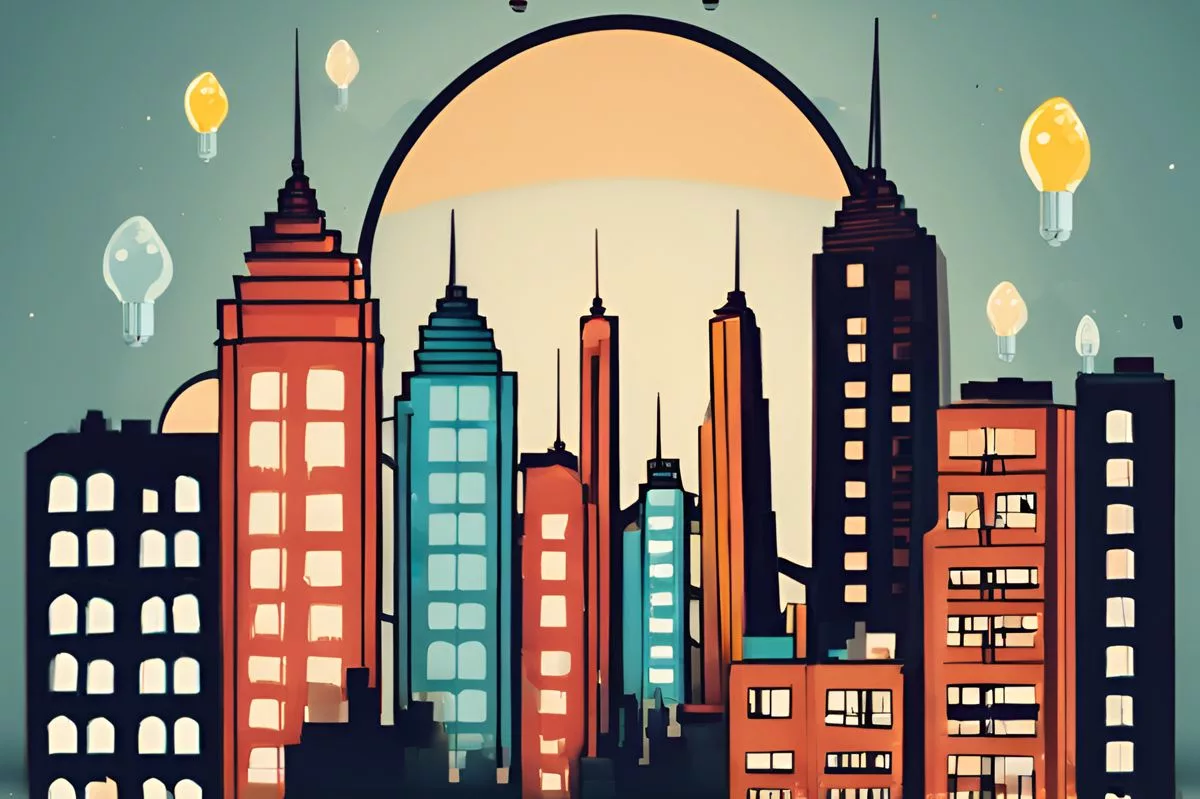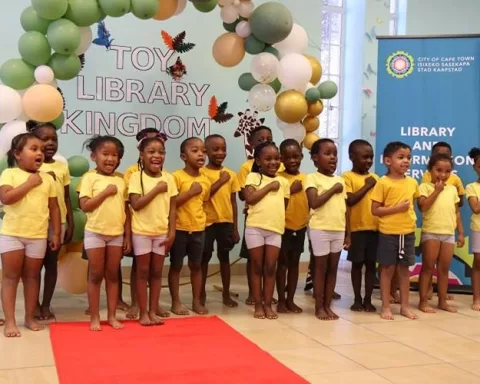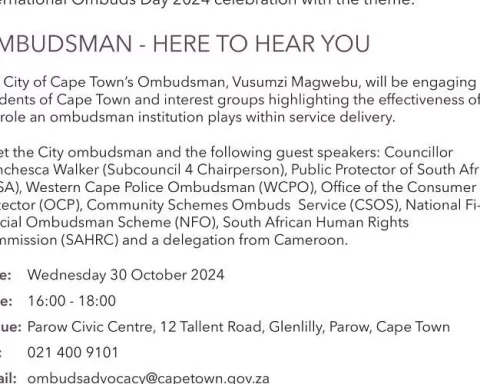When heavy rainfall hits Cape Town, the city’s water channels can become overwhelmed, causing flash floods in certain areas. Low-lying regions around the Diep River and Kuils River are particularly at risk, and stormwater-related infrastructure can also be swamped. To combat these issues, it’s important for residents to report blocked infrastructure and dispose of waste responsibly, while the City takes proactive measures to clean infrastructure before winter. Safety is key during these times, with precautions including refraining from approaching water bodies and canals during heavy rain and maintaining gutters and drains free of debris.
How does Cape Town’s waterway system cope during heavy rainfall?
During periods of intense rainfall, Cape Town’s water channels can become overloaded, causing flash floods in some areas. Low-lying regions around the Diep River and Kuils River are particularly prone to flooding, and stormwater-related infrastructures such as retention and detention ponds can also be overwhelmed. To mitigate these issues, residents are advised to report blocked stormwater infrastructure and to dispose of waste responsibly. The City also takes proactive measures to clean stormwater and sewage infrastructure before winter.
When the stormy skyline of Cape Town threatens to unload a torrential downpour, understanding the intricate dynamics of the city’s water networks becomes vital. Like the lifeblood of our metropolitan environment, rivers and canals are predicted to reach their peak and potentially spill over their banks. In these situations, the safety of residents should take precedence, with the implementation of necessary precautions and the selection of alternative paths where possible.
Past Storms and their Impacts
Historically, storms have converted Cape Town’s water channels into raging flash floods. A case in point is the 9th of July when ceaseless, heavy rain pushed the capabilities of different rivers and canals to their limit, with some even exceeding their boundaries during the daytime. Nevertheless, relief came as the rain subsided, allowing stormwater to drain unimpeded into the stormwater system, thus freeing the roads from the clutches of the floodwaters.
The Liesbeeck River was one of the casualties, overstepping its banks in certain areas, notably in the Kildare Road neighborhood. In a similar fashion, the Vygekraal River and Blomvlei Canal in the Rylands/Crawford districts experienced an overflow.
Waterways of Cape Town and their Impact
A noteworthy trait of Cape Town’s central district is the Diep River, which during periods of uninterrupted rain, tends to flood designated low-lying regions, affecting surrounding communities. This river, sourced from the Swartland area, runs through Rietvlei in Table View, eventually coupling with the waters of the Milnerton Lagoon. The Blinkwater stream in Camps Bay is another river where flooding problems frequently arise.
In the city’s eastern district, prone to flooding are areas around the Sir Lowry’s Pass River, near Sir Lowry’s Pass Village and Dennehof Street, the district around the Kuils River at Driftsands Dam, and the Eerste River and its branches, like the Soet River, that thread their way through informal settlements in Nomzamo and Lwandle.
Infrastructure Challenges
Continuous rain doesn’t just fill up bodies of water, but also impacts stormwater-related infrastructures such as retention and detention ponds. These structures, initially constructed to regulate the flow of stormwater into rivers and seas, can be swamped by the relentless downpour, leading to localized flooding and bursting of canals and rivers.
A significant issue exacerbating this problem is the habitual disposal of waste, from rubble to plastics, into these infrastructure systems, intended solely for facilitating the flow of stormwater. Residents can significantly alleviate these issues by responsibly reporting blocked stormwater infrastructure and unlawful dumping.
Safety Measures and City’s Efforts
In these unstable times, it’s the safety of residents that holds utmost importance. Consequently, the City advises everyone to follow safety measures, including refraining from approaching water bodies and canals during heavy rainfall, refusing to attempt crossing canals or rivers, correctly disposing of garbage, maintaining gutters and drains free of debris, and abstaining from walking or driving in floodwaters.
The City’s endeavors to manage the aftermath of heavy rains are directed by various departments, who embark on the proactive cleaning of the stormwater and sewage infrastructure before the onset of winter, ensuring that the systems are ready to take on the surge of excessive stormwater.
It’s vital to understand, though, that during times of consistent rainfall, when rivers and canals reach their overflow point, stormwater faces hurdles in draining freely from roads into watercourses. Luckily, a pause in the rain can rapidly relieve this flooding issue, demonstrating the resilience of Cape Town’s waterway systems.
City emergency crews are always prepared, on high alert, and vigilant, ready to react to any incidents that might occur, keeping a close watch on the situation to guarantee the safety of all residents. As the clouds amass, we stare into the eyes of the looming storm, prepared and steadfast, confident in our communal resilience and ingenuity.
1. What happens to Cape Town’s waterway system during heavy rainfall?
During heavy rainfall, Cape Town’s water channels can become overloaded, resulting in flash floods in some areas, particularly low-lying regions around the Diep River and Kuils River.
2. What are some areas in Cape Town that are prone to flooding during heavy rainfall?
Low-lying regions around the Diep River and Kuils River are particularly prone to flooding, as well as areas around the Sir Lowry’s Pass River, the Eerste River and its branches, and Blinkwater stream in Camps Bay.
3. What are some challenges that Cape Town’s infrastructure faces during heavy rainfall?
Stormwater-related infrastructures, such as retention and detention ponds, can be overwhelmed during heavy rainfall, leading to localized flooding and bursting of canals and rivers. Habitual disposal of waste into these systems exacerbates the problem.
4. What safety measures should be taken during heavy rainfall in Cape Town?
Residents should avoid approaching water bodies and canals during heavy rainfall, refrain from walking or driving in floodwaters, maintain gutters and drains free of debris, and dispose of garbage responsibly.
5. What proactive measures does the City of Cape Town take to address heavy rainfall and flooding?
The City of Cape Town takes proactive measures to clean stormwater and sewage infrastructure before winter to ensure that the systems can handle the surge of excessive stormwater. Emergency crews are always on high alert and ready to react to any incidents that might occur.
6. What impact have past storms had on Cape Town’s waterway system?
Past storms have caused Cape Town’s water channels to become flash floods, with rivers and canals overstepping their banks in certain areas. The Liesbeeck River, Vygekraal River, and Blomvlei Canal have experienced overflow in the past.



